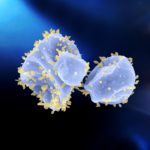Link to Pubmed [PMID] – 28189969
Virology 2017 Feb;504:114-121
Bacilladnaviruses have single-stranded (ss) DNA genomes and infect diatoms, a major group of unicellular algae widespread in aquatic habitats. Despite their ecological importance, the provenance and relationships of bacilladnaviruses to other eukaryotic viruses remain unclear. Accordingly, they are currently classified into the ‘floating’ genus Bacilladnavirus. Here we present three new bacilladnavirus genomes recovered from a mollusc Amphibola crenata and benthic sediments from the Avon-Heathcote estuary in New Zealand. Our analysis shows that the rolling-circle replication-initiation proteins of bacilladnaviruses display unique conserved motifs and in phylogenetic trees form a monophyletic clade separated from other groups of ssDNA viruses. Unexpectedly, distant homology detection combined with structural modeling indicates that bacilladnavirus capsid proteins are homologous to those of ssRNA viruses from the Nodaviridae family. Considering the sequence diversity within the expanding Bacilladnavirus genus, we argue that classification of these viruses has to be revised and the current genus upgraded to the family level.


